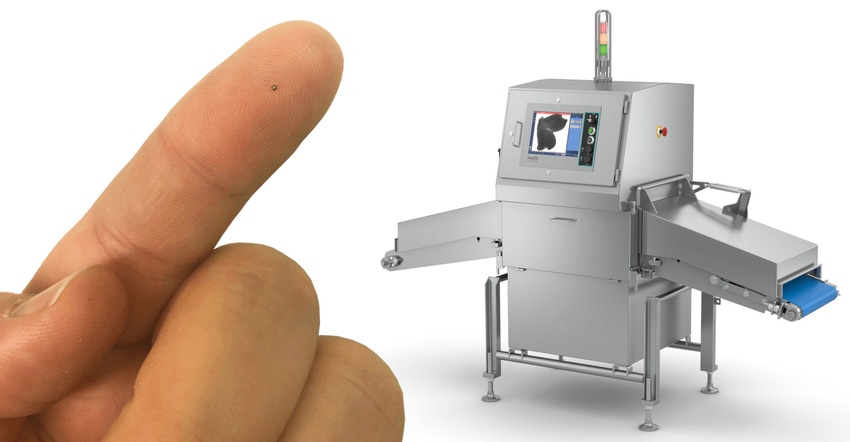New X-ray Inspection Performance Doubles
Through new detector boards and revamped generators and algorithms, the PXT X-ray inspection system for foods and other at-risk products can isolate contaminants as small as 0.3 millimeters — which is half the size of the current industry standard.

Technological jumps in X-ray inspection have been few and far between in the last 20 years. But a recent advancement has doubled the performance, which could help boost a food manufacturer’s assurance of safety.
The new PXT system — engineered by Eagle Product Inspection and available from its principal distributor and product-development partner ABM Equipment — is “a quantum-leap for the industry,” says John Cassa, co-owner of ABM Equipment.
“For the past few decades every player in the space has been pretty comparable,” he continues. “One company may perform better with this contaminant or that product. Or they might get real tight specs on a specific application. They might see 0.3 mm stainless steel in cheese, for example, but then that’s all they can see.
“We’re getting unheard-of specs on everything — metal, bone, glass, plastic, stone, item weight, fill level, whatever,” Cassa boasts.
The point is that accuracy for one contaminant no longer comes at the cost of missing other types.
Delectable detectability.
The breakthrough involves both hardware and software.
• On the hardware side, the generators’ beam geometry was modified and the detection nodes (diodes) were placed closer together. This reduces the spaces that contaminants could slip through.
• On the software side, higher resolution means better data. Now that the company has more data to work with, it restructured the algorithms to more accurately identify contaminants and reduce false rejects.
Both hardware and software developments combine for a surprising (shocking?) performance lift.
Regarding accuracy, Jeff Walling, the other co-owner of ABM Equipment, says, “We took the [PXT] in a head-to-head against the industry’s other top players and blew them out of the water. Even the smallest test contaminants—the ones meant to make the machines fail—were detected at 100% accuracy. We just didn’t have contaminants small enough to see how far it could go.”
Regarding false rejects, how much have they been reduced? John Hilgendorf, marketing manager, at ABM Equipment, explains that false rejects are a function of the system’s accuracy and will mirror the detectability performance. So, saying false rejects have been cut in half too is a safe thing to say.
About the Author(s)
You May Also Like




